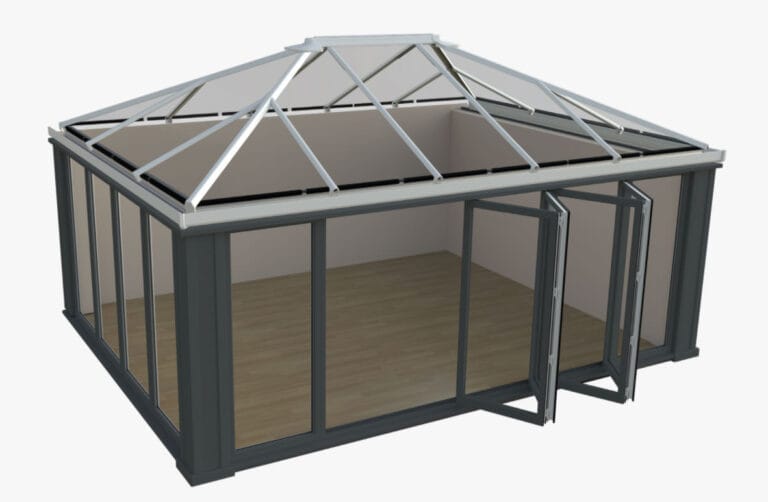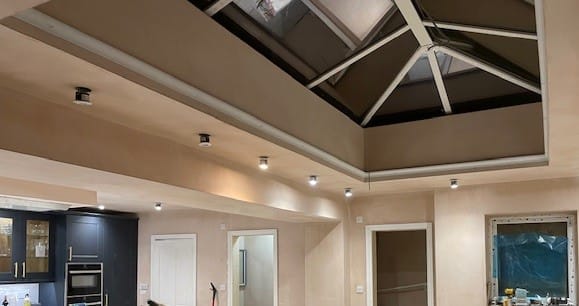
A Professional You Can Trust.
Robby Branson Builders Ltd
Upgrading your conservatory parts can raise a lot of questions—from planning rules to glass choices and everything in between. As Dorset and Hampshire’s trusted specialists, we’ve gathered the most common queries our clients ask us before starting their conservatory parts replacements or major projects. Whether you’re thinking about a new roof, better insulation, or replacing panels, you’ll find clear, honest answers below.

We believe in educating our customers about the best options for their conservatory. From materials to energy efficiency, we provide expert guidance, so you can make informed decisions with confidence
Our team is with you every step of the way, from the first consultation to completion. Whether it's explaining the results of our MOT (survey), planning, design, or aftercare, we provide reliable support to ensure a smooth and friendly experience
Upgrading your conservatory shouldn’t be stressful. We’ll guide you through your options and, if you’d like us to, manage everything from building department pre-inspections to planning applications and Building Regulations. Our goal is to deliver a hassle-free experience with minimal disruption—so you can focus on enjoying your upgraded, usable space.
We don’t just upgrade conservatories—we enhance homes. Our use of high-quality materials, precise installation, and innovative solutions guarantee a stunning and lasting resul

Answer:
The time required for an upgrade depends on the scope of work. Simple conservatory parts like glass replacements may be completed in a day, while full roof upgrades, new walls, or structural modifications may take longer. On average, most projects can be scheduled within 3 to 6 weeks from the execution of any estimate and terms.
Answer:
Yes. Every upgrade improves your conservatory’s temperature control. The extent of the improvement depends on the upgrades chosen. Modern insulated roofing, high-performance glazing, and energy-efficient materials can significantly enhance comfort, keeping your conservatory warmer in winter and cooler in summer. If you’d like to explore the best options for your space, we’re happy to discuss what would work best for you.
Answer:
Most conservatory parts or substantial upgrades do not require planning permission unless structural changes go beyond permitted development rights. However, building regulations may apply, particularly for solid roof conversions or substantial structural modifications affecting insulation, safety, and energy efficiency.
Each project is unique, and we assess compliance on a case-by-case basis to provide clear guidance and ensure a smooth process.
Answer:
Yes. Many conservatories parts can be transformed without a full rebuild. Options include replacing the roof, upgrading glazing, improving insulation, or adding new walls. This allows you to modernize and enhance performance without the cost of a complete replacement.
Answer:
We strive to keep disruptions to a minimum. Most upgrades are completed from the inside out, minimizing mess and preserving your garden. Our team works efficiently to ensure a smooth and hassle-free installation process. However, if your upgrade requires foundation work, the level of disruption will depend on the chosen construction method.
Answer:
Modern conservatory parts and materials require minimal maintenance. We recommend regular cleaning of glass and framework, keeping gutters clear, and inspecting seals to maintain efficiency. Specific maintenance guidance is provided based on the materials used in your upgrade.
Answer:
The MOT report remains the property of Robby Branson Builders Ltd unless a substantial upgrade contract is agreed and executed. However, we always explain our findings verbally so you can still make an informed decision. This helps us protect the value of the service and keep the MOT fair for genuine homeowners. If you would like to follow up with us and our FREE MOT click this link here
In many cases, yes. If you're upgrading to a lightweight roof system—especially one that includes insulation and plastered ceilings—it may trigger full building regulations. That’s because your conservatory is starting to function more like a traditional extension. You can follow this link to planning portal for more information
To meet compliance, most approved roof systems require two checks early in the process:
Foundation check – The existing footings may need to be exposed to confirm they meet minimum depth and strength.
Are the conservatory parts like the walls and frames strong enough? – Your current windows, doors, and wall elements must be suitable for the new structural loads. In some cases, certain modern PVC profiles are designed to meet these requirements without added support
These checks aren’t always deal-breakers, but they are essential before work begins—as it’s the first thing any inspection company or local authority will ask for. This step may involve early costs. If you're exploring this upgrade, we'll explain your options and whether building regulations apply to your specific case after our MOT inspection. You can also read more by going to our roofing page here
That depends on the age, condition, and structure of your current conservatory parts. But for older builds, two upgrades tend to deliver the biggest impact:
Roof upgrade – Swapping out old, tired polycarbonate for a new, modern version with U-values nearly equal to today’s glass is the most budget-friendly improvement. You could also consider a full glass roof or a hybrid system. These options boost comfort year-round, improve insulation, and—best of all—most can be done without needing planning permission or building regulations.
Window and door glass upgrades – Replacing old conservatory parts like single glazing or early double-glazed units with today’s high-performance glass makes a huge difference. And if your budget allows, upgrading the full frame, windows, and doors will reduce condensation, cut glare, and noticeably increase warmth and efficiency.
Our MOT service will show exactly which upgrades suit your space, goals, and budget. Often, just two smart improvements can make your old conservatory feel brand new—without starting from scratch.
Yes, there are several ways to make your conservatory floor warmer. Popular options include adding thermal underlay.
For even better results, you can install underfloor heating—either electric or water-based—depending on your budget, floor type, and available space. If your structure is still classed as a conservatory, it must operate separately from the main house system.
Upgrading the insulation beneath the floor, if possible, can also make a noticeable difference.
If there is enough space or depth below your doors, a new overlaid insulated floating floor can be installed, which is an economical upgrade. A warmer floor can greatly improve the overall comfort of your conservatory, especially during cooler months.
Our MOT check would discover this.

Leaks from unusually shaped conservatory parts are more common on single- or double-ended versions of the Edwardian or Victorian styles, as well as variations of those two designs. It is often the underside cowl cover—where all the rafters join at the spider, or at the plain or decorative ridges—where the water appears to drip from. However, the actual problem typically originates from poor sealing, age-related movement, or general wear and tear on the outside of the roof. These issues can start in several different conservatory parts but ultimately show up as leaks in this area. They are known weak points, but we can usually identify the source quickly during our MOT inspection.
This is one of the most common issues we come across. The joint where the conservatory meets the house is called the wall plate or abutment—or in some designs, it may be a box gutter.
If it's a wall plate or abutment leak, the cause is usually failed flashing or sealant—or in some cases, it was never properly installed in the first place. Water can sneak in through the tiniest gaps, and sometimes you can even see daylight shining through. Fixing this may involve resealing or installing a new flashing system.
The box gutter is another frequent trouble spot. While manufacturers have made big improvements—like one-piece welded aluminium versions—the connections back to plastic (often hidden and hard to service) are still a very common source of leaks.
We’re not financial advisers or credit brokers, and we don’t receive referral fees or commissions from any lender. However, we understand that some homeowners prefer to spread the cost of larger upgrades.
If you're exploring finance options, we may be able to suggest potential avenues based on what others in the area have done — such as speaking with their bank, checking with local credit unions, or using trusted comparison sites.
We're always happy to talk you through the costs of different upgrade options during your MOT, so you can decide what fits your budget best. No pressure, no sales pitch — just clear guidance.